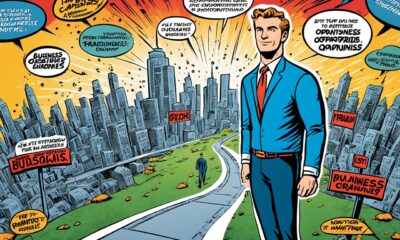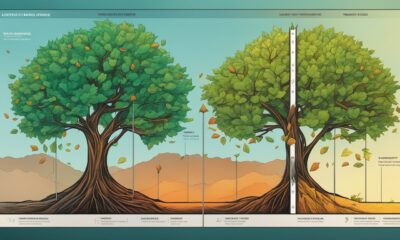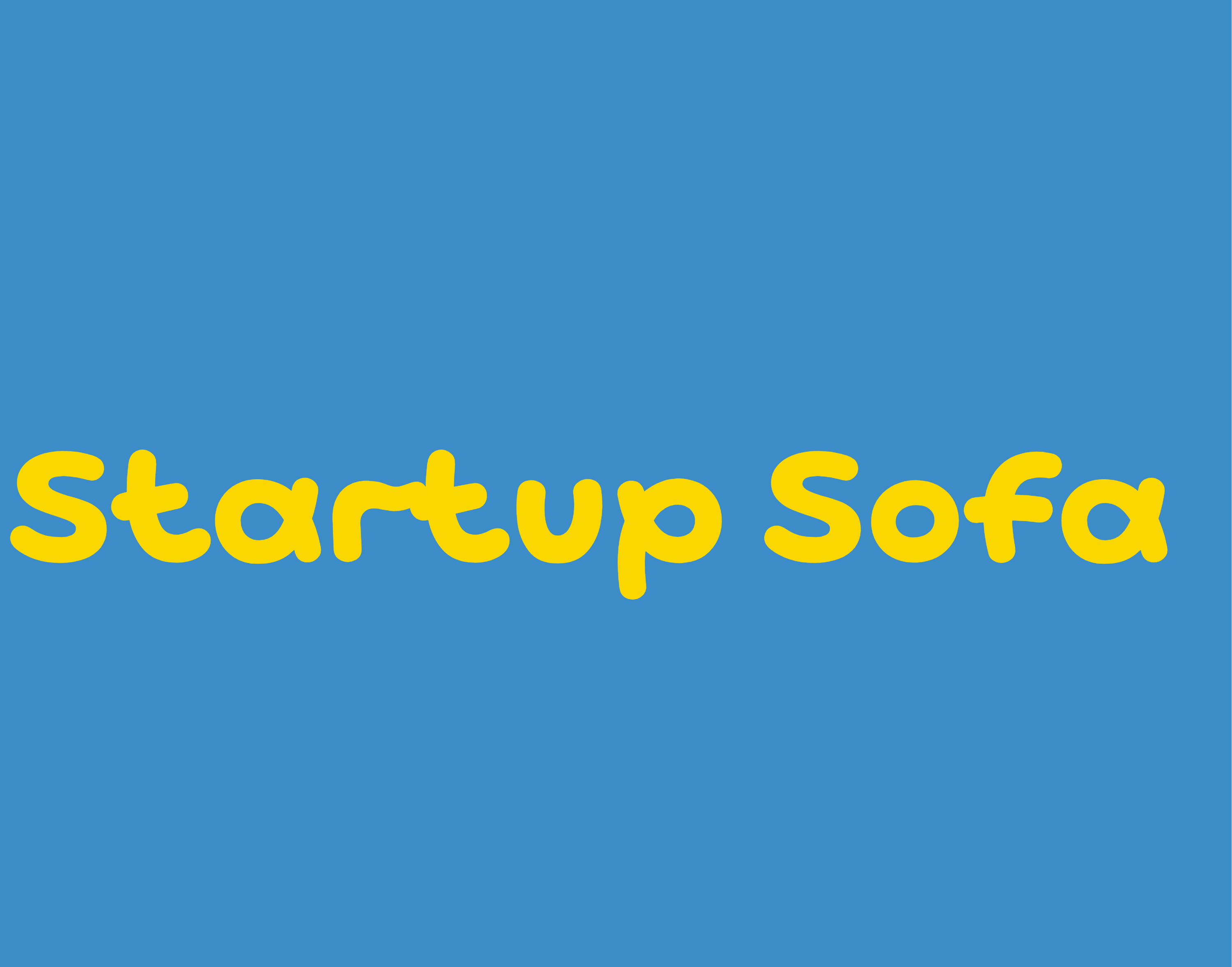Growing a Business
Boost Focus and Achieve Your Goals
I discovered powerful strategies to enhance focus and reach your goals—are you ready to unlock your full potential?

To boost your focus and achieve your goals, start by ditching multitasking; focus on one task at a time for better results. Block out specific times in your calendar for dedicated work and create a distraction-free zone. Get your blood pumping with short bursts of exercise, as it enhances mental clarity. Leverage technology wisely; block distractions and monitor your activities with apps. Finally, incorporate meditation to sharpen your concentration. By adopting these strategies, you'll streamline your efforts and increase productivity. There's plenty more to explore that can further elevate your focus and goal achievement. Seek out mentors or role models who exemplify focus and goal attainment, and learn from their habits and strategies. Surround yourself with a supportive network that encourages and motivates you to stay on track. By incorporating these additional elements into your routine, you can unlock growth mindset and reach new levels of success in both your personal and professional pursuits.
Key Takeaways
- Prioritize tasks by focusing on one at a time to enhance clarity and improve quality of outcomes.
- Block out specific times on your calendar for dedicated project work, minimizing distractions.
- Engage in 20 minutes of physical activity daily to boost mental clarity and cognitive function.
- Utilize productivity tools to monitor activities and block distractions for better time management.
Stop Multitasking
Multitasking might seem efficient, but it actually hinders your productivity and increases errors, so focus on one task at a time. When you tackle multiple tasks, your brain struggles to keep up, leading to mistakes and decreased efficiency.
Start your day with a challenging, creative task to engage your mind fully. Avoid the temptation of busy work, like checking emails, which can derail your focus.
Prioritizing your tasks helps maintain clarity and direction throughout your day. By committing to a single task, you'll enhance your concentration, leading to higher quality results.
Block Out Your Days

To maximize your productivity, it's essential to block out specific times in your day for dedicated project work. By setting these time blocks, you create a structured environment that enhances focus and accountability.
Here are four strategies to help you effectively block out your days:
- Use Color Coding: Visually organize tasks on your calendar to easily identify priorities.
- Set Timers: Maintain focus during work periods by using timers to keep you on track.
- Regularly Review: Assess your time blocks regularly to identify areas for improvement.
- Limit Distractions: Create a distraction-free zone during these blocks to enhance concentration.
Implementing these strategies can greatly boost your productivity and help you achieve your goals.
Get Your Blood Pumping

Engaging in physical activity for just 20 minutes can greatly boost your focus and enhance mental clarity. A brisk walk or quick workout gets your blood flowing and helps clear mental clutter. Fresh air and movement stimulate your brain, promoting better cognitive function.
Don't underestimate the power of hydration and adequate rest; both are essential for maintaining sharpness throughout the day. Remember to take breaks from screens to recharge your mind.
Incorporating short exercise sessions throughout your day can lead to increased productivity and creativity. So, the next time you feel your concentration waning, step outside or hit the gym for a quick burst of energy. Your goals will thank you for it!
Help Your Technology Help You

Technology can be your ally in boosting productivity when you use the right tools to track and manage your time effectively. Here are some strategies to make tech work for you:
- Use RescueTime to monitor your daily activities and identify time drains.
- Block distracting websites with apps like Cold Turkey or Freedom to maintain focus.
- Leverage calendar apps to allocate specific time blocks for dedicated project work, helping you stay organized.
- Regularly assess your productivity tools to verify they're still effective for your needs.
Meditate

Meditation can greatly improve your focus and clarity, making it an essential practice for achieving your goals. By setting aside just a few minutes each day for mindfulness, you'll train your mind to stay present and reduce distractions.
You can explore various meditation techniques, such as guided sessions through apps like Calm or Headspace, which provide structured practices. Joining a yoga class can also enhance your experience, combining physical movement with mental stillness.
Consistency is key; try to meditate at the same time daily to build a habit. Over time, you'll notice improved concentration, reduced stress, and a clearer path toward your objectives.
Start small, and you'll find that meditation transforms your focus and productivity.
Change Up Your Headphones

Changing up what's in your headphones can greatly enhance your ability to concentrate and stay productive while working. The right audio environment can make all the difference. Here are some tips to take into account:
- Go Instrumental: Opt for instrumental music to avoid the distraction of lyrics.
- Try Classical or Electronic: These genres can stimulate your mind and improve focus.
- Create Familiar Playlists: Stick to playlists you know well to minimize distractions from new sounds.
- Experiment with Background Noise: Find what works best for you, whether it's nature sounds, white noise, or ambient music.
Streamline Communication

Streamlining your communication can greatly enhance your team's efficiency and save valuable time.
Start by evaluating whether an email is truly necessary or if a quick face-to-face conversation would suffice. Often, direct discussions can clarify tasks much faster than lengthy email threads.
Encourage your colleagues to reflect on alternative methods too; sometimes a quick call or instant message can resolve issues swiftly.
Establishing norms around communication can help limit overload and confusion. For instance, set specific times for updates rather than constant notifications.
By refining your communication channels, you create an environment where everyone stays informed and focused.
Ultimately, this approach not only saves time but also fosters a more collaborative atmosphere, allowing your team to achieve its goals effectively.
Conclusion
By implementing these focus-boosting strategies, you'll transform your productivity into a superpower!
Stop multitasking and embrace single-tasking to sharpen your concentration.
Block out your days, get your blood pumping, and let technology work for you.
Meditate to clear your mind, switch up your headphones for a fresh vibe, and streamline communication to cut through the noise.
With these techniques, you can conquer distractions and achieve your goals with the ease of a superhero!
Growing a Business
Mastering Customer Retention for Business Success
Navigating the complexities of customer retention can unlock unprecedented growth for your business—discover the strategies that can make all the difference.

Mastering customer retention is essential for your business's success and growth. It's often cheaper to keep existing customers than to acquire new ones. You can enhance retention by understanding customer needs and offering tailored upsell opportunities. Designing an engaging loyalty program can encourage repeat purchases and build trust. Additionally, exceptional customer service makes a big difference in how customers perceive your brand. By measuring key metrics like customer churn and lifetime value, you can track your progress. Discover how to implement these strategies effectively and watch your business thrive.
Key Takeaways
- Prioritize customer retention as it is more cost-effective than acquiring new customers, ensuring long-term sustainability and profitability.
- Implement effective upselling strategies by understanding customer needs and offering complementary products that enhance their initial purchases.
- Design loyalty programs with clear rewards and achievable milestones to encourage repeat purchases and customer engagement.
- Enhance customer service by actively listening to concerns, personalizing interactions, and ensuring prompt resolutions to build trust and loyalty.
Importance of Customer Retention
Customer retention is essential because it costs considerably less to keep existing customers than to acquire new ones.
When you focus on retaining your current customers, you're building on the trust they've already established with your brand. This trust opens doors for upselling, as customers are more likely to evaluate additional products or services that enhance their experience.
Offering complementary items can deepen relationships and increase your revenue. Sometimes, businesses even sell initial products at a loss to attract a customer base, planning strategic upsells for later.
Strategies for Effective Upselling

Focusing on effective upselling strategies can greatly enhance your customer retention efforts and boost revenue from your existing clientele.
Start by understanding your customers' needs and preferences; this knowledge allows you to recommend relevant products or services. Offer complementary items that enhance their initial purchase, creating added value. Position higher-ticket items as premium options to elevate their experience.
Timing is key; suggest upsells during the purchase process or shortly thereafter, while their interest is high. Make the upsell process seamless—use persuasive language that highlights benefits without being pushy.
Ultimately, train your staff to recognize upselling opportunities and engage customers naturally, ensuring they feel valued rather than pressured.
Designing Loyalty Programs

To create an effective loyalty program, you need to clearly define the rewards and benefits that will resonate with your target audience. Consider what motivates your customers—whether it's discounts, exclusive access, or points redeemable for future purchases.
Next, set achievable milestones that encourage engagement, making sure the rewards feel attainable yet valuable. Keep communication transparent; let customers know how they can earn points and redeem rewards.
Also, implement a tiered structure to incentivize higher spending, giving loyal customers more reasons to stay engaged. Regularly evaluate and adapt your program based on customer feedback and behavior data, ensuring it evolves with your audience's needs and preferences.
This way, you'll foster long-lasting relationships and enhance customer retention effectively.
Enhancing Customer Service

Excellent service builds trust and loyalty, ensuring your customers keep coming back for more.
To enhance your customer service, focus on these key strategies:
- Listen actively: Understand your customers' needs and concerns by giving them your full attention.
- Train your team: Equip your staff with the skills and knowledge to address issues effectively and empathetically.
- Be responsive: Address inquiries and complaints promptly, showing your customers that you value their time.
Measuring Retention Success

Measuring retention success involves analyzing key metrics that reveal how well your business keeps customers engaged and satisfied over time. To effectively gauge your retention efforts, focus on metrics such as customer churn rate, repeat purchase rate, customer lifetime value, and net promoter score.
Here's a simple overview of these metrics:
| Metric | Description |
|---|---|
| Customer Churn Rate | Percentage of customers lost over a specific period |
| Repeat Purchase Rate | Frequency of customers returning to make purchases |
| Customer Lifetime Value | Total revenue expected from a customer during their relationship |
| Net Promoter Score | Measure of customer loyalty and satisfaction |
Conclusion
Mastering customer retention isn't just beneficial; it's essential for your business's success.
Did you know that increasing customer retention rates by just 5% can boost profits by 25% to 95%?
By implementing effective upselling techniques, creating engaging loyalty programs, and prioritizing exceptional customer service, you can transform one-time buyers into lifelong advocates.
Start focusing on these strategies today, and watch your customer relationships flourish, leading to sustainable growth and profitability in the long run. By prioritizing open communication, personalized service, and consistent follow-up, you’ll build trust and loyalty that sets your business apart from the competition. In an era where news like “wine company collapse shocks customers” can cause uncertainty and shake consumer confidence, having strong relationships with your clientele will help you weather any storm. Cultivating these connections provides a solid foundation for long-term success, even in challenging markets.
Growing a Business
Branding: Product First or Core Values
Can a brand thrive by prioritizing products over core values, or is the true key to success hidden in a delicate balance?

When considering branding, it's essential to balance product features and core values. You want your products to stand out, but your brand's identity should reflect what you believe in. Strong brands often lead by highlighting their unique value proposition, which resonates with consumer perceptions. Your core values can create trust and foster loyalty, while your products must meet consumer needs effectively. Focusing on both aspects helps secure a solid market position. Remember, understanding this balance is key to long-term success and recognition in the marketplace, and there's more to explore about effective strategies.
Key Takeaways
- Successful branding often balances product offerings with core values, ensuring alignment with consumer perception and expectations.
- A strong brand foundation emphasizes unique value while integrating core values to resonate with target audiences.
- Early marketing should reflect both product design and the brand's core values to avoid misalignment with consumer needs.
- Brands that prioritize core values can foster trust and loyalty, enhancing long-term success in the marketplace.
Understanding Branding Essentials
Branding essentials start in your prospect's mind, shaping how they perceive your product and its place in the market.
To build a successful brand, you need to understand that it often revolves around pioneering new categories. Think about Google in search or Coca-Cola in soft drinks; they've set the standard.
Your goal should be to own a specific category in the consumer's perception, whether that's as a leader, number two, or even an also-ran.
Focus on the unique value you bring, which differentiates your brand.
Remember, it's not just about what you sell, but how you're seen in the minds of consumers.
Establishing a strong brand foundation is vital for long-term success and recognition.
Navigating Market Positioning

To navigate market positioning effectively, you need to clearly define where you want your brand to stand in relation to competitors. Consider your unique value proposition and how it differentiates you in the market. Here's a simple table to help you visualize your positioning strategy:
| Positioning Strategy | Example Brands | Key Differentiator |
|---|---|---|
| Market Leader | Coca-Cola | Brand heritage |
| Strong No. 2 | Pepsi | Innovative flavors |
| Niche Player | LaCroix | Health-focused offerings |
| Emerging Challenger | Spindrift | Unique fruit flavors |
Role of Early Marketing

Early marketing plays an essential role in shaping product design and production, ensuring that consumer needs and perceptions guide development from the outset.
By engaging with potential customers early on, you gather valuable insights that inform your product strategy. This proactive approach helps you avoid costly missteps, as it aligns your offerings with market demand.
Consulting with marketing experts can enhance your understanding of consumer behavior, allowing you to craft a compelling message that resonates. By gaining insights from their expertise, you can identify key trends and tailor your approach to better meet your audience’s needs. With digital marketing strategies demystified, navigating the complexities of online platforms becomes more accessible, empowering you to make data-driven decisions. This targeted approach ensures that your messaging not only reaches the right people but also drives meaningful engagement.
Moreover, achieving first-mover advantage can set you apart, as seen with Chobani's rise in the Greek yogurt market.
Strategies for New Entrants

Understanding how to position your brand effectively is essential for new entrants in a competitive market. Start by identifying a niche where you can differentiate yourself from existing players.
You've got two main strategies: create a new category or narrow your focus. For instance, if you're entering a saturated market, consider targeting a specific consumer need that isn't being met.
Look at brands like Earth's Best and Silk, which successfully carved out new categories. Alternatively, if you can't create a new category, hone in on a particular aspect of your product, like BMW did with driving performance.
Aligning Consumer Perception

Aligning your brand with consumer perception is essential for achieving lasting success in the marketplace. You need to understand how consumers view your brand and guarantee that your messaging resonates with their values and expectations. This alignment creates trust and loyalty, ultimately driving sales. Here's a simple framework to help you assess your brand alignment with consumer perception:
| Aspect | Consumer Expectation |
|---|---|
| Quality | High standards of excellence |
| Innovation | Cutting-edge solutions |
| Trustworthiness | Transparency and honesty |
| Customer Service | Responsive and helpful support |
| Social Responsibility | Commitment to ethical practices |
Conclusion
In the vibrant tapestry of branding, your product and core values are the threads that weave together your identity.
By prioritizing both, you create a masterpiece that captivates your audience's hearts and minds.
As you begin this journey, remember that a brand isn't just a name; it's a story that resonates.
So, whether you're crafting a sleek gadget or a heartfelt mission, let your values shine through, guiding you to a lasting connection with consumers.
Growing a Business
Leonard Riggio: Revolutionizing Book Retail
Leonard Riggio's innovative approach to book retail transformed shopping into a cultural experience, but what challenges did he face along the way?

Leonard Riggio revolutionized book retail by transforming the shopping experience into a cultural outing. Starting as a clerk, he expanded the Student Book Exchange and later acquired Barnes & Noble, where he introduced superstores. You'll find comfortable seating and coffee, creating inviting spaces for exploration. Riggio's customer-centric approach combined innovative features like discount strategies and the Sales Annex, redefining how you engage with books. Despite facing criticism from independent bookstores, he emphasizes adapting to technology for the future. You'll see how his vision might shape the next chapter in the book retail industry.
Key Takeaways
- Leonard Riggio transformed book retail by acquiring Barnes & Noble and introducing a customer-centric superstore model.
- He created inviting spaces with seating and coffee services, making bookstores cultural hubs for relaxation and exploration.
- Riggio's innovative retail strategies included aggressive discounting and showcasing remaindered books, attracting a loyal customer base.
- His approach sparked criticism from independent bookstores, highlighting challenges in maintaining market competition.
Early Career Beginnings
Leonard Riggio kicked off his bookselling journey in the early 1960s as a clerk at the NYU bookstore, where he discovered his passion for the industry. You can imagine the excitement he felt surrounded by books and enthusiastic students.
After dropping out of college at 24, he took a bold step by investing $5,000 to open the Student Book Exchange (SBX) in 1965. His vision extended beyond just selling books; he aimed to create a community hub for students.
As SBX thrived, expanding to four additional campus bookstores in NYC, Riggio's determination set the stage for a remarkable career in retail. This foundational experience shaped his approach to bookselling, blending commerce with a genuine love for literature.
Expansion of SBX and Barnes & Noble

The success of the Student Book Exchange (SBX) quickly led to its expansion across multiple campuses in New York City, ultimately paving the way for Riggio's acquisition of Barnes & Noble in 1971, which transformed the book retail landscape.
You'd notice that SBX's innovative approach attracted a loyal customer base, making it an attractive opportunity for Riggio.
After acquiring Barnes & Noble for $1.2 million, he shifted its focus from traditional retail to a more modern, customer-centric model. This move not only expanded his influence but also set the stage for future growth.
Innovations in Book Retailing

With the acquisition of Barnes & Noble, Riggio transformed traditional bookselling by introducing innovative retail concepts that turned bookstores into vibrant community spaces.
He redefined the shopping experience by creating superstores, filled with comfortable seating and coffee services, inviting customers to linger. You'll find an entertainment vibe in these spaces, where browsing books feels more like a relaxing outing than a chore.
Riggio also embraced mass-market retailing, employing aggressive discount strategies that attracted a broader audience. The Barnes & Noble Sales Annex showcased remaindered books and free newspapers, enhancing foot traffic and customer engagement.
This shift not only boosted revenue but also established bookstores as essential cultural hubs, redefining how you perceive and interact with literature.
Customer Experience Transformation

Transforming customer experience, Riggio focused on creating inviting spaces where you could relax, explore, and enjoy books like never before. He understood that a bookstore shouldn't just be a retail space; it should feel like a community hub.
By introducing comfortable seating and coffee services, he turned Barnes & Noble into a destination for readers. You could spend hours browsing, sipping coffee, and discovering new titles in a cozy atmosphere.
Riggio's vision extended beyond mere transactions; he aimed to enhance your connection to literature. The superstore model didn't just increase sales; it redefined how you experienced shopping for books, making it a pleasurable outing rather than a chore.
This transformation laid the groundwork for a new era in book retail.
Industry Challenges and Criticism

While Riggio's innovations in creating inviting bookstore environments garnered praise, they also sparked significant criticism from independent bookstores facing challenges in the evolving retail landscape.
You might feel the tension as these smaller shops struggled to compete with Barnes & Noble's superstore model, which dominated the market.
Critics argue Riggio's approach pressured publishers into exclusive deals, limiting choices for consumers and stifling diversity in the industry.
You can see how independent booksellers, often community-focused, faced hurdles in maintaining their customer base amidst aggressive pricing and marketing strategies.
This disruption led to a broader conversation about the future of bookselling, raising questions about sustainability and the potential loss of unique voices in literature as larger chains continued to expand their reach.
Vision for the Future

Envisioning a future shaped by technological advancements, Riggio anticipates a significant evolution in the publishing landscape, focusing on the integration of online services for accessing books.
He believes that the way readers discover and interact with literature will transform through digital platforms, creating a more personalized experience. You can expect features like instant access to a vast library, interactive content, and tailored recommendations based on your preferences.
Riggio sees this shift not just as a convenience but as a means to foster a deeper connection between readers and authors. By embracing these innovations, you'll find that bookstores will likely evolve into hybrid spaces, blending the physical and digital domains to enrich your reading journey and community engagement.
Adapting to Technological Change

As the publishing landscape evolves, bookstores must adapt to technological changes that enhance the reader experience and streamline access to literature. Embracing these innovations is vital for staying relevant.
Here are some key strategies you can implement:
- Integrate e-commerce: Optimize your website for online sales and inventory management.
- Utilize social media: Engage with your audience through platforms like Instagram and Facebook.
- Offer digital content: Provide eBooks and audiobooks to cater to diverse reading preferences.
- Incorporate technology in-store: Use tablets for browsing or self-checkout stations to improve efficiency.
Conclusion
Leonard Riggio's journey is a tapestry woven with ambition and innovation, transforming the book retail landscape into a vibrant marketplace.
He didn't just open stores; he crafted inviting havens for readers, where books and community intertwined like threads in a quilt.
As the pages of the industry turn, his visionary approach continues to inspire, reminding us that adaptability and foresight can illuminate even the darkest corners of change. His ability to anticipate trends and pivot when necessary has solidified his reputation as a forward-thinking trailblazer in the field. Whether navigating through uncharted territories or addressing unforeseen challenges, his track record speaks volumes. In a rapidly evolving landscape, “hitandrun claims wellness leader,” echoing the speed and precision at which he has managed to redefine industry standards while ensuring collective well-being remains a top priority.
Riggio's legacy is a beacon for the future of book retailing.
-

 Startup Stories and Case Studies4 months ago
Startup Stories and Case Studies4 months agoStartup Stories and Case Studies: Learn from Success
-

 Franchises4 months ago
Franchises4 months agoSweet Success: The Nothing Bundt Cakes Franchise
-

 Franchises4 months ago
Franchises4 months agoExploring Franchises: Your Path to Business Ownership
-

 Business Planning4 months ago
Business Planning4 months agoCraft a Robust Business Plan: Your Guide to Success
-

 Business Planning4 months ago
Business Planning4 months agoDefine Your Products and Services: A Crucial Step
-

 Funding4 months ago
Funding4 months agoUnderstanding How Startup Funding Works
-

 Business Planning4 months ago
Business Planning4 months agoAnalyze Your Competitors: Gain a Competitive Edge
-

 Franchises2 months ago
Franchises2 months agoTaco Bell's CEO Redefines Leadership Norms



























